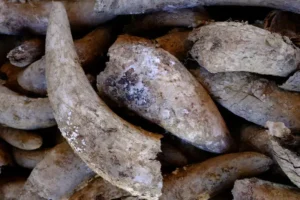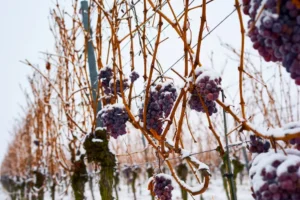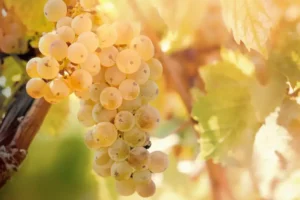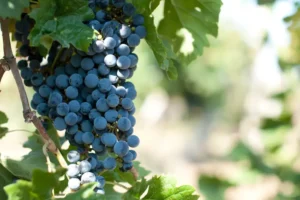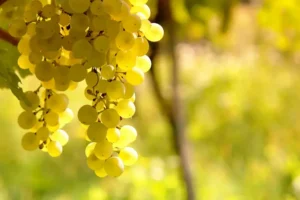What is Syrah?
Syrah, also known as Shiraz, is one of the world’s great red wine grapes, producing bold, flavourful wines with dark fruit and peppery spice. The name you’ll see on the bottle often depends on where the grape is grown: in France and most of Europe it’s called Syrah, while in Australia and many New World regions it is known as Shiraz.
The grape originated in the Northern Rhône Valley in France, where it is the backbone of famous appellations like Côte-Rôtie, Hermitage, and Cornas. In these wines, Syrah shows an elegant side with savoury notes of black olive, violet, and pepper alongside its dark fruit character.
In the late 18th and 19th centuries, Syrah spread beyond France, eventually thriving in Australia, where it became the country’s signature grape under the name Shiraz. Here, it often produces powerful, ripe, and fruit-forward wines, with flavours of blackberry, plum, and chocolate.
Today, Syrah/Shiraz is planted across the globe – from France and Spain to Australia, South Africa, and California. Its ability to adapt to different climates and winemaking styles makes it one of the most versatile and widely loved red grapes in the world.
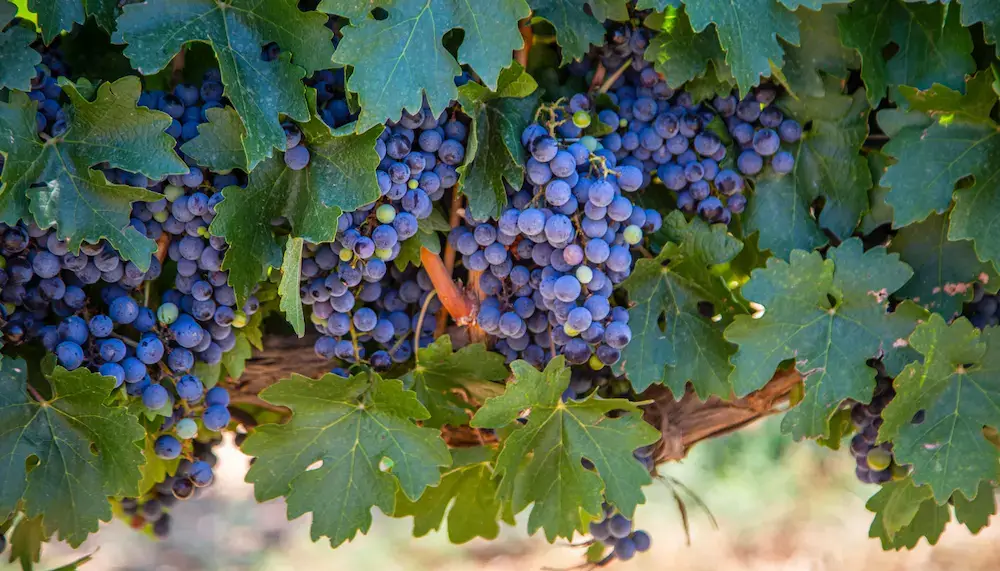
What does Syrah taste like?
Syrah wines are known for their bold and robust profile. Expect to experience dark fruit flavors such as blackberry, plum, and blueberry, often accompanied by notes of black pepper, smoke, and sometimes a hint of floral aromas. Syrah’s tannins can be firm, contributing to a structured and age-worthy wine.
Syrah produces bold, deeply coloured red wines with flavours that range from dark fruit to spice and smoke, depending on where it’s grown.
Climate influence
In cooler climates, such as the Northern Rhône, Syrah tends to be more savoury and structured, with notes of blackcurrant, blackberry, olive, pepper, and violet.
In warmer regions like Australia’s Barossa Valley, Shiraz is richer and more full-bodied, bursting with ripe plum, blackberry, chocolate, and sweet spice.
Winemaking influence
Oak ageing can add layers of vanilla, toast, and smoky notes, while older bottles often develop earthy, leathery, and gamey characteristics. Despite its boldness, well-made Syrah retains a balance of fruit, tannin, and acidity that makes it both powerful and complex.
Syrah/Shiraz Flavour Profile
- Body: Medium to full
- Acidity: Medium
- Tannins: Medium to high
- Sweetness: Dry
- Fruit flavours: Blackberry, plum, blueberry, blackcurrant
- Other notes: Black pepper, violet, smoked meat, chocolate, leather, spice
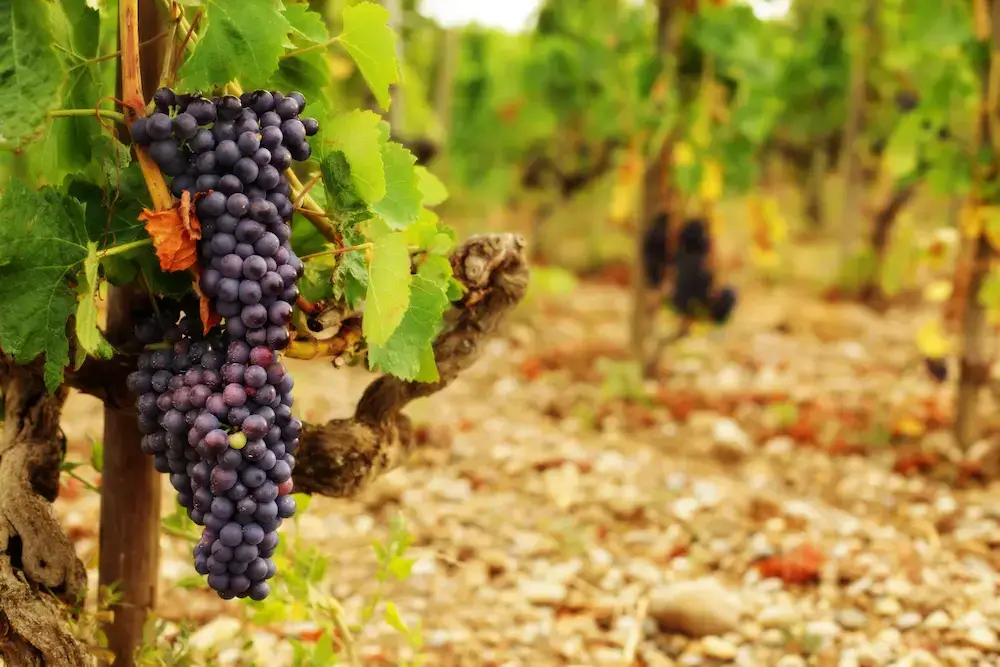
What food goes with Syrah?
Meat
Syrah is a classic partner for red meats. Rich cuts of beef, lamb, and venison are excellent matches, especially when grilled or roasted. In France’s Northern Rhône, Syrah is often paired with gamey meats like duck or wild boar, where the wine’s peppery spice and savoury notes mirror the intensity of the dish.
Barbecue
Few wines match barbecue as well as Shiraz. Its ripe, juicy fruit and smoky undertones are perfect with grilled steaks, ribs, sausages, or burgers, particularly when seasoned with spice rubs or barbecue sauce. Australian Shiraz is especially well-suited to smoky, charred flavours.
Poultry
For poultry, Syrah works best with richer preparations. Duck breast with cherry or plum sauce is a classic combination, and roasted chicken or turkey with herbs and spice rubs can also shine alongside a softer, fruit-forward Shiraz.
Cheese
Bold red wines like Syrah pair beautifully with aged and hard cheeses. Try it with Cheddar, Manchego, or aged Gouda. The wine’s peppery character also complements blue cheeses like Roquefort, especially when paired with fruit-based accompaniments.
Vegetarian Dishes
Syrah/Shiraz isn’t just for meat lovers – it also pairs well with hearty vegetarian dishes. Think mushroom stews, lentil casseroles, roasted aubergines, or black bean chilli.
Spicy Food
Shiraz’s plush fruit and touch of sweetness in warmer-climate examples make it a good partner for spicy cuisines. Pair it with Moroccan tagines, spiced lamb koftas, or Indian curries that lean more on warming spices than searing heat.
Desserts
Although not a typical dessert wine, Syrah can work with dark chocolate, spiced chocolate desserts, or berry-based sweets. Its ripe fruit and peppery edge create an indulgent pairing with chocolate mousse or a blackberry tart.
Where do you find Syrah?
Syrah/Shiraz is grown all over the world, and its style changes dramatically depending on climate and winemaking traditions.
France
Syrah’s home is the Northern Rhône Valley, where it produces some of the world’s most iconic wines in appellations such as Côte-Rôtie, Saint-Joseph, Hermitage, and Cornas. These wines are elegant, structured, and often show savoury notes of black olive, pepper, and violet.
In the Southern Rhône, Syrah is widely used in blends, particularly in Côtes du Rhône and Châteauneuf-du-Pape. It adds colour, fruit, and structure alongside Grenache and Mourvèdre.

Rhône Valley, France
Australia
In Australia, Shiraz is the signature red grape and the country’s most famous wine.
Barossa Valley and McLaren Vale are known for powerful, full-bodied Shiraz packed with ripe plum, blackberry, and chocolate flavours.
Cooler regions such as Hunter Valley, Yarra Valley, and Margaret River produce more restrained, peppery versions with higher acidity.
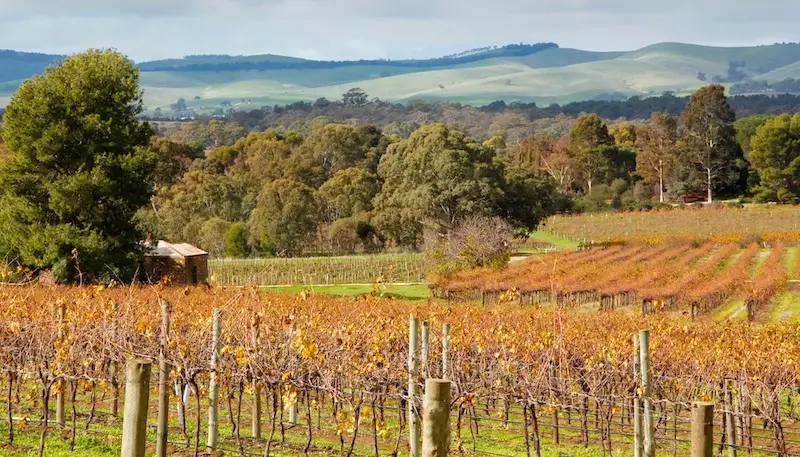
Barossa Valley, Australia
United States
In the US, Syrah is most prominent in California and Washington State. California Syrah varies widely, from lush, fruit-forward wines in Paso Robles to more savoury, Rhône-inspired styles in Sonoma and Santa Barbara. Washington Syrah often sits somewhere in between, combining ripe fruit with fresh acidity and spice.
Spain
Syrah has found a place in regions such as La Mancha, Priorat, and Campo de Borja, often blended with Garnacha or Tempranillo. Spanish Syrahs are typically full-bodied, spicy, and fruit-forward, offering excellent value.
South Africa
In South Africa, Shiraz thrives in Stellenbosch, Swartland, and Paarl, producing wines that balance ripe fruit with savoury spice and earthy complexity. Many producers blend Shiraz with other Rhône varieties, creating distinctive “Cape blends.”
Chile
In Chile, Syrah is grown in cooler regions like Elqui Valley and Limarí, where it develops peppery, floral notes alongside ripe black fruit.
Argentina
In Argentina, it is often overshadowed by Malbec but still produces robust, fruit-driven wines, especially in Mendoza and San Juan.

